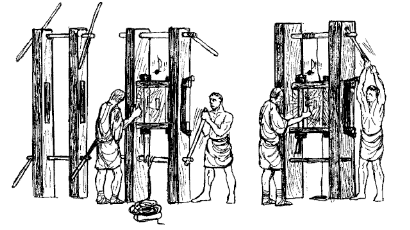In Book I of his Ten Book of Architecture, Vitruvius discusses the importance of the integral education of the architect who not only should be a capable draftsman but also well versed in many other disciplines like medicine, music and philosophy. This concept of the architect as a “master builder” derives from the Greek arkhitekton, arkhi– “chief” + tekton “builder, carpenter”; this Roman model of a “chief builder” was much broader than the one we conceive today. A modern architect is exclusively dedicated to the design, plan and construction of buildings; in the 1st c. BCE the architect was also a broad-spectrum technician who was well versed in fields that spanned from urban planning to military engineering.
“For neither native talent without learning nor learning without native talent create the master craftsman. To be educated, he must be an experienced draftsman, well versed in geometry, familiar with history, a diligent student of philosophy, know music, have some acquaintance with medicine, understand the rulings of legal experts, and have a clear grasp of astronomy and the ways of Heaven.”
That general instruction had very specific applications. Vitruvius served as a ballista (artilleryman) where musical instruction became very practical when aiming catapults. The tension of the cords in the catapults was calculated by “ear”, a perfect straight shot could only be achieved if the tension chords were perfectly “in tune”.
“The architect should know music in order to have a grasp of canonical and mathematical relations, and besides that, to calibrate ballistae, catapults and scorpions. In the headpieces of war machines there are “hemitone” spring holes, right and left, through which the twisted sinew cords are pulled tight by windlass and handspikes; these cords should not be wedged in place or fastened down unless they give off a particular and identical sound to the ears of the catapult maker. For when the arms of the catapult have been cocked to these tensions, upon release they should deliver an identical and equivalent thrust; if they are not tuned identically, they will keep the catapult from launching a straight shot.”
 Figure – Tuning of the catapult, from the Ten Books of Architecture.
Figure – Tuning of the catapult, from the Ten Books of Architecture.
“Next, the ends of the ropes are threaded in through the spring holes of the capitals, and carried across to the other side, and then they are fastened around the windlasses and wound around them, so that when the ropes are stretched over them by the levers, when struck with the hand, each of them will give off a corresponding tone. […] They are stretched with handspikes on windlasses until they make an identical sound, and in this way catapults are adjusted to tone by propping with wedges according to the musical sense of hearing.”